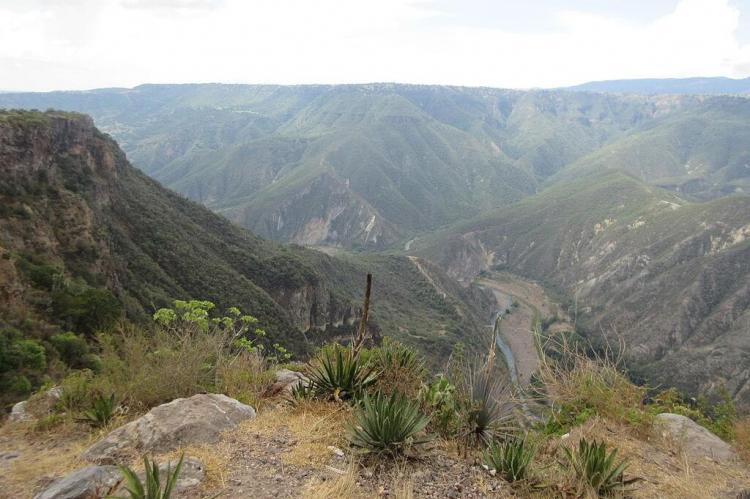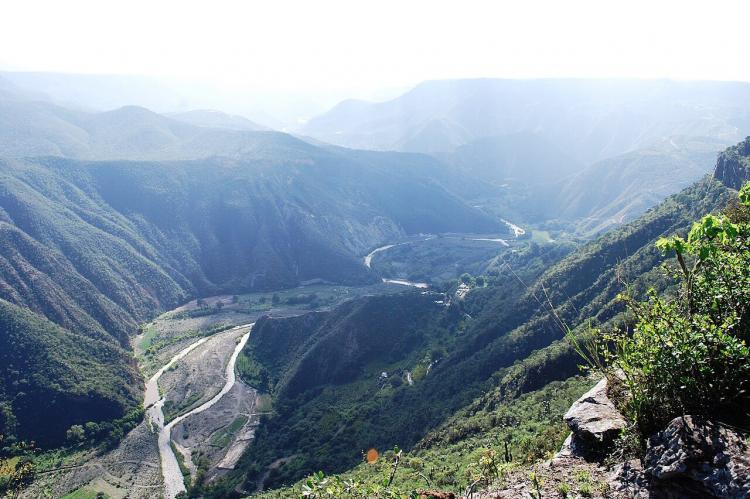Barranca de Metztitlán Biosphere Reserve (Mexico)
The Barranca de Metztitlán Biosphere Reserve is a protected natural area in Hidalgo, Mexico. It is known for its dramatic scenery of steep cliffs, deep winding canyons, and distinctive flora and fauna.
Barranca de Metztitlán Biosphere Reserve
The Barranca de Metztitlán Biosphere Reserve is a protected natural area in Hidalgo, Mexico. It is known for its dramatic scenery of cliffs, deep winding canyons, and distinctive flora and fauna.
The Biosphere Reserve has a total surface area of 96,043 ha (237,327 acres), of which 12,474 ha (30,824 acres) make up the core area, and 83,869 ha (207,245 acres) make up the buffer zones. The Reserve exhibits irregular boundaries, and the site's shape is long and irregular.
Barranca de Metztitlán is located in the geographical and cultural region known as the Hidalgo Sierra Baja. The landscape here features a semi-arid plateau between the Sierra Madre Oriental to the east and the Sierra de Pachuca to the west.
The plateau features four large ravines named after the river that crosses them: the Amajac, Metztitlan, Almolon, and Metzquititlan canyons. The main canyon is the Barranca de Metztitlan, formed by the Metztitlan River, which generally flows north-northwest.
The canyon floor is 1,200 to 1,300 m (3,937 to 4,265 ft) in elevation, while the Sierra Madre Occidental to the east and northeast reaches 1,800 to 2,600 m (5,900 to 8,530 ft) in height.
The Laguna de Metztitlán is a lake formed when a large landslide blocked the course of the Metztitlán River, creating a natural dam. The lake covers 700 ha (1,730 acres) and has an average depth of 9 to 10 m (29 to 33 ft). The area of the lake can increase to 5,000 ha (12,350 acres) during periods of heavy rainfall.
Five communities within the Reserve are considered indigenous since more than 25% of their population speaks the native Ñha-Ñhu language. They are located in the municipality of Metztitlán and belong to the ethnic group Otomi.
Flora and Fauna
The Barranca de Metztitlán Biosphere Reserve has a variety of plant communities, including xerophilous scrub, submontane scrub, tropical dry deciduous forest, pine-oak forest, pine forest and juniper woodland.
Representative species of flora include mesquite (prosopis laevigata), nopal (Opuntia sp.), old man (cephalocereus senilis), acacia (acacia sp.), colubrina (colubrina ehrenbergii), swelling (pseudosmodingium andrieuxii), candelabra cactus and pitayo (isolatocereus dumortieri).
Representative species of fauna include fox (urocyon cinereoargenteus), southern striped skunk (mephitis macroura), cacomixtle (bassariscus astutus), kestrel (falco sparverius), black-crowned stone (nycticorax nycticorax), buzzard (cathartes aura), coyote (canis latrans), hawks (buteo sp.) and white heron (ardea alba).

